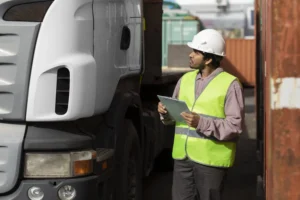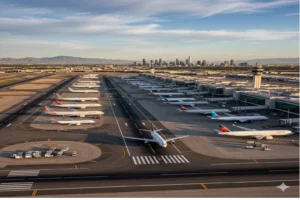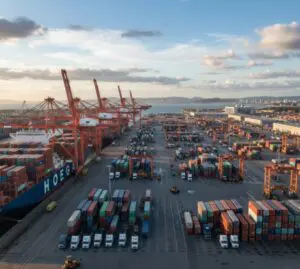Control personnel have been working around the clock turning away more than 800 trucks since the reopening of the road.
Authorities in Tennessee have issued a statement reminding commercial vehicle drivers of the strict prohibition against using U.S. 441, also known as Newfound Gap Road, following its reopening just two weeks ago. This route, which runs through the Great Smoky Mountains National Park and connects North Carolina and Tennessee, features a narrow design and sharp curves, making it unsuitable for heavy trucks.
The National Park Service (NPS) has emphasized that Newfound Gap Road is a two-lane road with steep grades and tight turns. Officials have noted that the configuration of this road lacks truck lanes and safe areas to slow down or stop, posing a serious risk to other vehicles traveling on it.
U.S. 441 reopened on October 2 after damage caused by Hurricane Helene in North Carolina, complicating access for drivers. As a result, many roads in the state have become impassable, leading some truckers to seek alternative routes, and authorities have stressed that only essential travel is permitted, discouraging the use of Newfound Gap Road.

Detours and safety measures: authorities combat truck traffic on U.S. 441
Detours have become a necessity, especially on Interstates 40 and 26. Authorities have indicated that drivers should take Interstate 77 north to connect with Interstate 81 toward Tennessee. However, this has led many truckers to choose U.S. 441, ignoring the warnings, which has resulted in an increase in incidents and accidents on the road.
In response, control personnel at the ends of the road have been working around the clock, rejecting more than 800 trucks since the reopening. Despite these efforts, the NPS has reported multiple incidents involving commercial vehicles. “The park roads are not structurally designed to handle heavy vehicle traffic,” officials warned, reiterating that trucks will be turned away.
Measures to keep trucks off U.S. 441 include the use of variable message signs, collaboration with local communities to place warnings, and the strategic placement of cones and barrels. Those who ignore these warnings may face fines of up to $5,000. The safety of travelers and the preservation of the park are currently the top priorities, while the reopening of I-40 remains without a specific date, further complicating transportation in the region.

Ending CDL reciprocity: the U.S. seeks stricter measures
New bill would require states to comply with the strict CDL regulations recently established. The U.S. House of Representatives has introduced new legislation aimed at

Cargo theft costs the transportation industry $18 million in losses
Cargo theft has been one of the most persistent issues facing the freight transportation industry so far in 2025. Cargo theft has been one of

Duffy Secures $41 Million to Save Essential Air Service as Shutdown Threat Looms
U.S. Transportation Secretary Sean P. Duffy announced on Wednesday that the Department of Transportation (DOT) has secured $41 million in additional emergency funding to sustain the Essential Air Service (EAS) program, a federal initiative that subsidizes commercial flights to rural and underserved communities across the United States.

Expanding opportunities for young drivers: the DRIVE Safe Act
The House of Representatives has reintroduced a proposal aimed at facilitating access for young drivers under the age of 21 to operate trucks across state

25% tariffs on medium and heavy trucks postponed
The 25% tariffs on medium and heavy trucks have been rescheduled, set for November 1. The 25% tariffs on medium and heavy trucks have been

How a U.S. Government Shutdown Impacts Truckers, Freight Transport, and Jobs
Truckers keep driving. Producers keep working. Business owners keep paying taxes. But in Washington, the offices go quiet, bureaucrats argue, and millions of private-sector workers are left in uncertainty. That is the reality of a government shutdown — a clear sign of how big the federal apparatus has become. When it stops, it drags down those who truly keep the economy moving.
